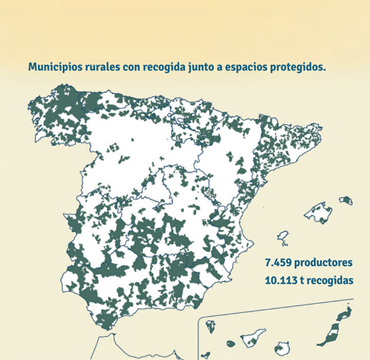49. Cabecera noticia datos mapa logistico_2015
The collection of industrial waste oil, a loss-producing activity ensured by SIGAUS
SIGAUS ensures the collection of waste oil, beyond distances or amounts, despite being a highly complex and largely loss-producing activity in Spain. This is revealed by the recent report, "Industrial Waste Oil in Spain", in which an X-ray analysis is performed on the generation of this hazardous waste and universal collection service developed by SIGAUS in Spain, with data concerning 2014.
26-11-2015

24. Párrafo noticia resultados mapa logistico_2015
The generation of waste oils in Spain has a wide geographical spread, locating very few areas without generation of waste, and a significant contrast between major sources of generation where many producers are concentrated (and a majority of the generated waste oil), and large rural areas where production points are regularly located but very spread out. In this rural environment small amounts of waste are generated. However, they sum up a significant amount (similar to the collection in the 11 largest cities in Spain), the collection of which requires long displacement of management companies working with SIGAUS, since they are located in the vicinity of large towns.
Therefore, more than half of the waste oil in Spain was collected only in 100 large localities; 25% in 300 municipalities with moderate generation. However, the last 23% is divided along a line of 4.250 municipalities located throughout the country. All this creates a scenario of high fragmentation, making the collection of waste a loss-producing activity.
A fragmented and dispersed generation
Of the 165.000 collection operations performed within production points registered in the Technological Information System (TIC) of SIGAUS during the last year, more than half of them did not exceed 500 kg (approximately the capacity of two barrels), providing a significant 15 % of total waste recovered. Only 1 out of 6 collections exceeded 1.000 kg.
As for the dispersion of the collected amounts, about 30% of the waste oil collected in 2014 required displacements exceeding 100 km, showing the capillarity of the system, which has an intense activity, for example, in regions outside the mainland, in unpopulated areas, mountain areas or areas so isolated that they do not possess even other basic services such as schools, pharmacies and access to broadband internet. A scenario in which financing exercised by SIGAUS plays a key role in getting the service to all those corners.
Another handicap for the recovery of waste is an extremely diversified generation caused by the multiplicity of activities that generate waste. 28% of production points (over 16.000) and 21% of the waste oil come from activities of all kinds, different from the two large generating sectors (workshops and the industrial sector), ranging from transport, trade, construction, agricultural and forestry activities, car rental, or hotels, among others.
32. Contenido noticia resultados mapa logistico_2015
“
Thanks to the financing system of SIGAUS, the recovery of waste oil is guaranteed anywhere, regardless of location and regardless of the profitability of collection.
„
Environment protection
SIGAUS intervention is particularly crucial in rural areas (over 32.000 tons collected in 18.000 production points). Precisely in those isolated and least populated environments where the generation of waste in a particularly dispersed form (and therefore with a higher risk of management) are the most important natural values located such as protected natural areas, areas sensitive to water pollution, etc., with aggravating environmental risk in the event that improper management occurs.
In fact, collection operations that take place in rural areas with protected areas (where 7.459 producers were served in 1.224 different municipalities) managed volumes 30% lower than the national average, while the average displacement to perform them was of 105 km from the management centre.
24. Segundo párrafo resultados ML_2015
Besides water resources (large rivers, reservoirs, lakes, sensitive areas to pollution of the waters or soils of high permeability) during 2014, SIGAUS managed waste oils in more than 1.600 rural localities where there were collected such quantities of waste as the ones generated in Valencia, with an average collection also well below the national average, and an average displacement of 114 km.
Taken together, the data provided in the study portray a management system that faces a highly fragmented generation, due to the nature of the waste and the territorial characteristics of Spain. A system that, thanks to financing operations of SIGAUS, guarantees the recovery of waste anywhere, regardless of location and regardless of the profitability of collection, collecting 100% of the waste, and covering the 98% of the population.
SIGAUS intervention ensures, at the same time that regeneration is the majority treatment of waste oil, as required by the law. This is deficient because, even if the resultant product has a market value, it does not cover the costs of all operations prior to obtaining it, especially in market environments of low oil prices, as the one experienced for many months internationally.